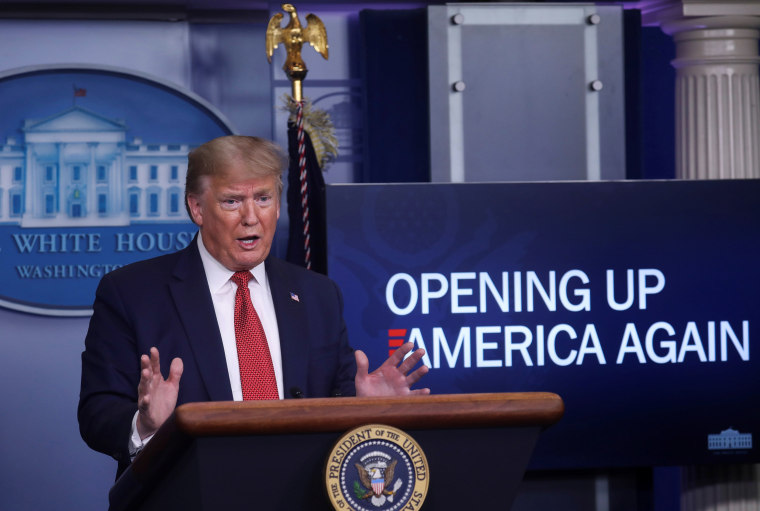By Monday afternoon, Donald Trump had heard about various governors forging regional agreements in response to the coronavirus crisis, and he seemed eager to put them in their place. "[T]hey can't do anything without the approval of the president of the United States," Trump said. The Republican added that he has "the ultimate" and "total" authority over pandemic decision-making.
But the president went on to use a specific phrase that became relevant anew yesterday. "The president of the United States calls the shots," he boasted on Monday.
Four days later, Trump held a videoconference with governors and said, "You're going to call your own shots." It was part of the rollout of a White House plan that isn't actually a plan.
President Donald Trump announced federal guidelines to reopen the U.S. on Thursday that put the onus on governors of making decisions about their states' economies.... It is "implementable on a statewide or county-by-county basis" at the discretion of each state's governor -- a stark contradiction from the president's earlier assertion that he had "total authority" to direct governors how and when to reopen.
In recent weeks, the talk from the White House was that the president, his team, and his many task forces were hard at work on developing a "plan" to reopen the United States -- possibly as early as May 1. Yesterday, however, a very different approach came into focus: Team Trump had actually developed guidelines, which state and local officials could follow, or not, in full or in part, at their discretion.
As a practical matter, it suggested the White House was simply yielding to reality: Trump's chest-thumping on Monday notwithstanding, most federal officials very likely realized that they had limited authority to bark orders at state leaders. The president could not, for example, direct governors to end state-based stay-at-home orders.
And so, instead of inching toward a perilous standoff with state and local officials, Trump retreated, ceding power to governors whom he characterized as his employees just a few days earlier.
This appears to suit the White House's political team just fine. A Washington Post report added overnight, "Trump's the-buck-stops-with-the-states posture is largely designed to shield himself from blame should there be new outbreaks after states reopen or for other problems."
Quite right. For Trump, this is the ideal dynamic because he doesn't really have to do much, and he can point fingers as a way of redirecting responsibility. Unsatisfied with stay-at-home orders? Blame your governor. Alarmed by rising death tolls? Blame your governor. Skyrocketing unemployment? Blame your governor.
The White House's "plan," such as it is, doesn't require the administration to do much, other than offer choices and broad-strokes guidelines to states.
Of course, the flip-side to such a strategy is that the president may struggle to take credit in the event that things go well, though if recent history is any guide, Trump will try to find a way.

